Though Shalotung is less than 4km from the hustle and bustle of Tai Po Market – around the same distance as Central to Causeway, should a kite care to fly direct – it seems a remote place, hidden away in the hills. The only road to it is narrow, angling up a wooded hillside before curling around into a small valley, and ending just above a stream.
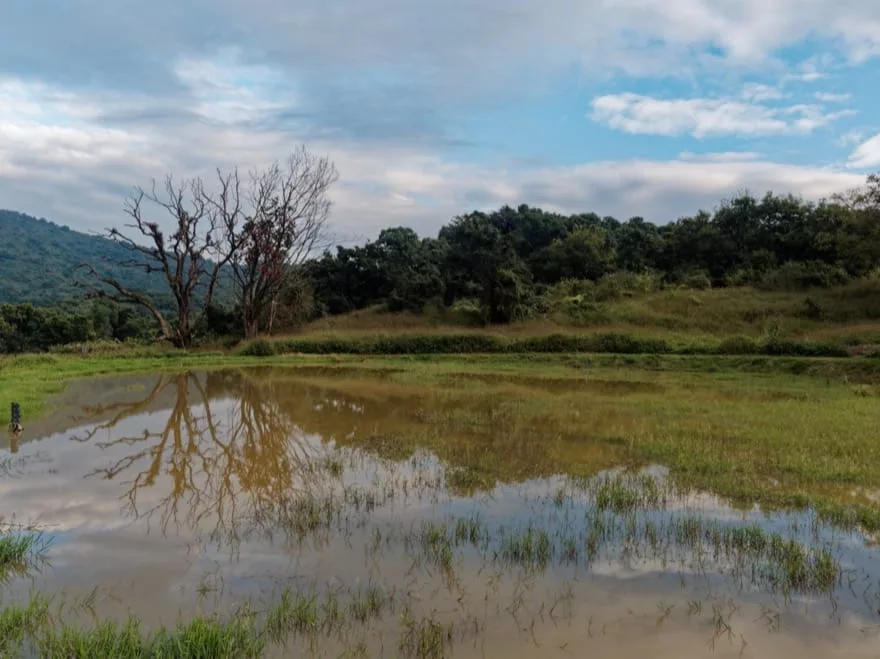
From here, there’s a dirt track past trees, shrubs and swarthy grass, leading into an area akin to a basin ringed by hills. The basin floor is gently undulating, and the track leads by a relatively high point where a fence marks the boundary of an organic farm. A sign’s stern warning the fence is electrified is tempered by a no entry symbol blended with the silhouette of a cartoon dinosaur.
Close by, a fading information board introduces six of the butterfly species found at Shalotung. A couple of minutes beyond this, the dirt road ends at the hamlet of Cheung Uk. This is a cluster of around fifty small houses, nestled beneath a wood with majestic trees. No one lives here now, and most houses are in varying stages of decay, with only a handful maintained, including one that now mostly serves as a simple café for hikers.
Beside Cheung Uk, recently created pools are tended and fussed over by a small team of workers, in hopes they will attract an increasing variety of wetland wildlife. There’s another stream alongside these, with a succession of pools and small cascades shaded by trees. Even on an early winter’s day, when most insects are inactive, two small attractive dragonflies known as Common Blue Jewels fly close together in an aerial skirmish, competing for territory.
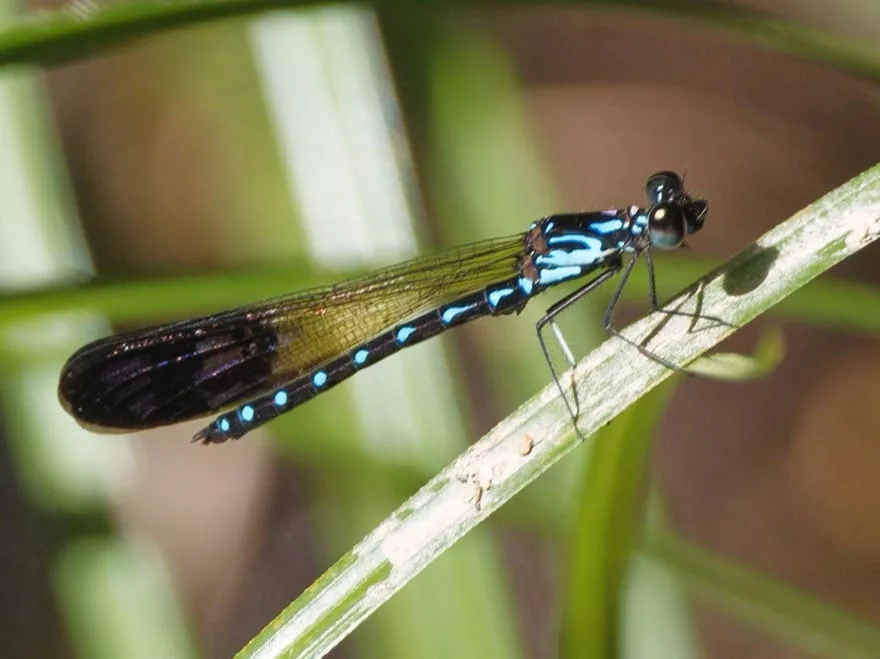
How bucolic it seems! So near, yet so far from the madding crowds: if you knew nothing of its backstory, you might figure Shalotung is Hong Kong’s very own version of Shangri-La.
And yet, this apparent tranquillity belies Shalotung’s role at the centre of fierce disputes spanning four decades. As a South China Morning Post article titled “Trouble in paradise” noted in June 1995: “of late the sleepy hollow has come to resemble something of a battlefield.”
Twists and turns rivalling convoluted soap operas
To a large extent, the fighting over Shalotung has been a war of words, but at times there has been very real damage inflicted on the landscape here, in a long-running saga with twists and turns to rival even the most convoluted soap operas. It’s a saga featuring a cast of characters spanning resident and ex villagers, wannabe developers, nature lovers and green groups, consultants, offroad vehicle enthusiasts, and small yet highly influential dragonflies. Yes, you read that right: dragonflies.
Investigate the history of Shalotung, and you might find it hard to pin down dates for key events. There are at least three differing reports of the year villagers first settled here, though perhaps the most trustworthy of these is 1689, as in a letter to the Post from three former residents.
That was just two decades after the area that is now Hong Kong was forcibly evacuated, along with much of China’s southern coast, as the newly triumphant Qing dynasty sought to boost its security against remnant Ming forces on Taiwan. The evacuation lasted from 1662 to 1669, and historian James Hayes noted that while around 16,000 people left the district and less than 1700 returned, the government assisted Hakka people with immigration into the area.
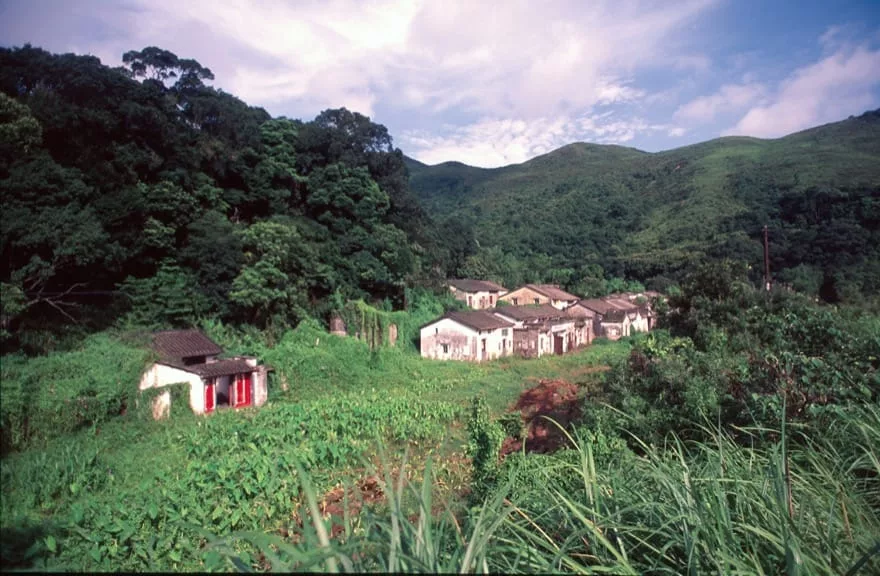
The Cheungs are Hakkas, so perhaps the ancestral Cheung family who settled at Shalotung arrived with this wave of immigration. Soon afterwards, another Hakka man – Lei Wai-yan – married into the village, then known as Lo Wai. The villagers were farmers, cultivating rice and vegetables, and rearing ducks, chickens and pigs. As their numbers grew, the Cheungs moved a little west, establishing Cheung Uk, while the Leis stayed in the village that was renamed Lei Uk.
While the farmers must have remodelled the local landscape, particularly to create rice paddies along with a network of irrigation channels, Shalotung was an unremarkable place in the annals of Hong Kong. Accounts of Cheung Uk and Lei Uk by the Antiquities and Monuments Office mention only that, “Sha Lo Tung was one of the bases of the guerillas against the Japanese Occupation (1941 – 1945) because of its geographical advantage”, before briefly relating the villages’ demise.
This began in the 1960s, when agricultural activity declined, and villagers increasingly worked in urban areas, or headed for new lives overseas, especially in the UK. By the mid-1970s, only a few dozen elderly residents remained.
In 1978, much of the land around and especially east of Shalotung was designated as Pat Sin Leng Country Park. The future surely looked peaceful. Yet as elsewhere in Hong Kong, the village areas were excluded from the country park, supposedly so rural lifestyles could continue – leaving open the possibility for other uses.
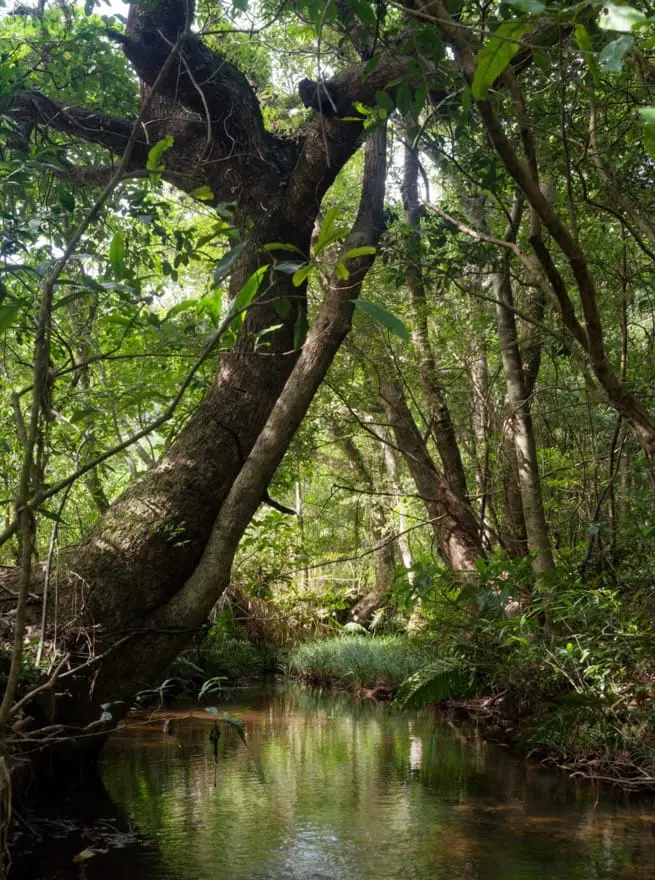
Enter the Shalotung Development Company
Enter the Shalotung Development Company, which was established in 1979, and over the years has concocted several plans for the basin. The company approached villagers, and purchased rights to use most of their land – in return for a HK$150,000 deposit for each house plus money for land; and a promise that once the development was finished, each villager could refund the deposit in return for a house they could live in or sell.
The initial proposal – for a golf course plus overnight accommodation, was rejected due to objections from three government departments, notably as Shalotung is a water gathering ground that helps supply Plover Cove Reservoir.
Undeterred, the company expanded its plan, adding a clubhouse, luxury housing and more, and in 1983 this received in-principle approval from a Lands and Works Conference. Seven years later, the Country Parks Authority gave its approval after a consultative body, the Country Parks Board, approved plans for a development that would include 31 hectares of country park land. The Lands Department looked set to follow suit, provided concerns regarding an environmental impact assessment were addressed.
But six environmental groups formed what Mordecai Lee, in Government Public Relations: A Reader, dubbed “a crusade” against the Country Parks Authority’s decision, arguing golf is an elitist sport and public access would be restricted. In 1991, a WWF Hong Kong’s newsletter carried an article titled “The Rape of Sha Lo Tung”, suggesting the golf course was a clever ploy to enable luxury housing development; if he saw this, Country Parks Board member Dr John Hodgkiss was unimpressed, as in December that year he wrote, “I can’t understand all this fuss about a golf course.”
Friends of the Earth applied for judicial review of Country Parks Authority’s decision, which was ruled invalid and quashed by the High Court. In 1993, the Commissioner for Administrative Complaints [the Ombudsman] upheld a complaint of maladministration against the Country Parks Authority.
The would-be developer responded by revising the plan to exclude country park areas and downsizing the golf course from 18 to 9 holes, while also boosting the planned housing. Yet the project remained as elusive as ever.
Green group’s crusade continues
Green groups continued their crusade, in 1994 petitioning governor Chris Patten to voice their objection to the development, and noting Shalotung is a unique site for dragonflies, with two recently discovered species that were new to science.
Former residents were losing patience. “We have demanded the village be built now and we want compensation for the years our people have been paying rent,” said their representative, Roger Li Kwok-keung, a villager who was by this time an accountant living in England. “We have given the developer until the end of the year to do these things or we will take back the village.” The next year, 1995, saw bulldozers arriving, with shrubs and trees bashed down, land stripped bare, supposedly for organic farming. But no farming took place, no village was retaken. Shalotung fell quiet again, even as the saga rumbled on.
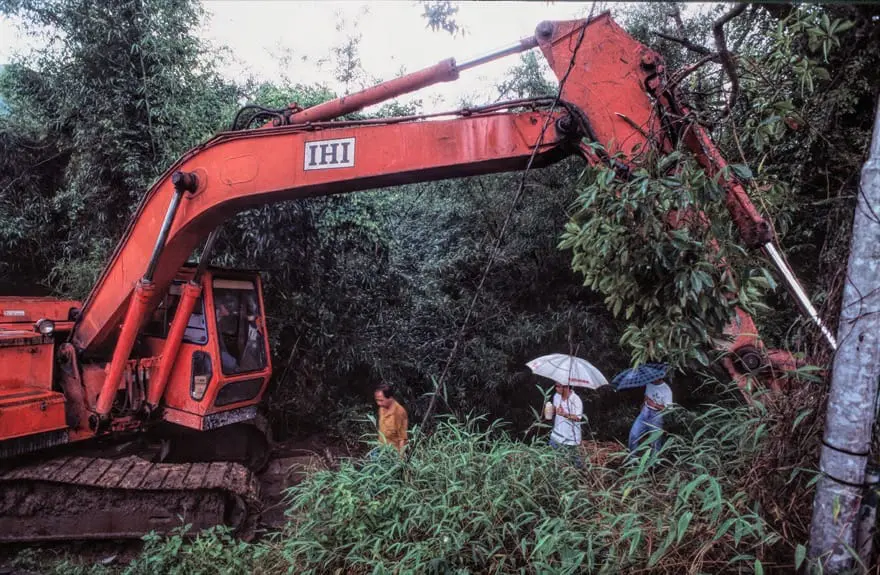
Though the golf course was dropped from the plan, the High Court refused to overturn a conservation order stopping the developer building 160 homes at Shalotung. Village head Cheung Tin-fuk expressed dismay, telling the Post: “If the dragonflies and butterflies don’t like the development, they can fly away.”
There was further environmental impact assessment work, including a project for which I spent three days surveying birds at Shalotung. One afternoon, I met Joseph Fong, director of the Shalotung Development Company, and asked what he thought of the dragonflies and so forth. He was forthcoming till I remarked, “Well, you do own one of the best areas for biodiversity in south China,” after which he checked his car and ignored me. Birds were not included in the next wildlife survey.

Around the turn of the century, wargamers and off-road drivers arrived, the latter reportedly “churning village trails into muddy wastelands” and operating in open defiance of police orders.
Partnership with green group yet greenies unimpressed
By 2012, the developer was back with a new plan, this time including a 60,000-niche columbarium in partnership with a former opponent, Green Power. Surely this would placate the greenies? Alas for the developer, not so.
Ten environmental groups raised objections to the scheme, which seemingly disappeared without a trace. Three years later, more vegetation was cleared, and in 2016 “self-proclaimed villagers” planted rapeseed with yellow flowers that attracted Instagrammers but were useless for wildlife. In December that year, Joseph Fong announced he would be forced to sell his land in the area, claiming the government would not help with conservation so the land was being destroyed. Evidently unruffled by the unfilled promises to villagers, and multiple wild creatures losing their homes, he said, “We are the biggest victim.”
Fong was perhaps unfortunate that, thanks partly to dragonflies, the area where he saw opportunities in the 1970s had become Hong Kong’s second highest priority site for nature conservation, after the Deep Bay/Mai Po area; yet unlike Deep Bay the government refused to step in and buy land. But in his January 2017 policy address, Chief Executive Leung Chun-ying announced a potential way forward, by offering the developer a rehabilitated landfill in exchange for its holdings at Shalotung.
Negotiations were held, leading to final terms for the land exchange being agreed to in April last year [2022]. With the government keen to start work on conservation as soon as possible, a management agreement with Green Power had commenced four years previously – aiming to rehabilitate and improve a core area for wildlife.
At last, the future for Shalotung looked bright. “Negotiation and compromise can lead to a happy outcome for all,” a Post editorial enthused in 2017. But not for all, not at Shalotung anyway: in 2018, a villager sued the developer in a bid to honour its agreement to build two houses, and Green Power filed a writ in the High Court seeking an injunction against five men – all surnamed Cheung – to ban them from entering the conservation site and intimidating its staff.
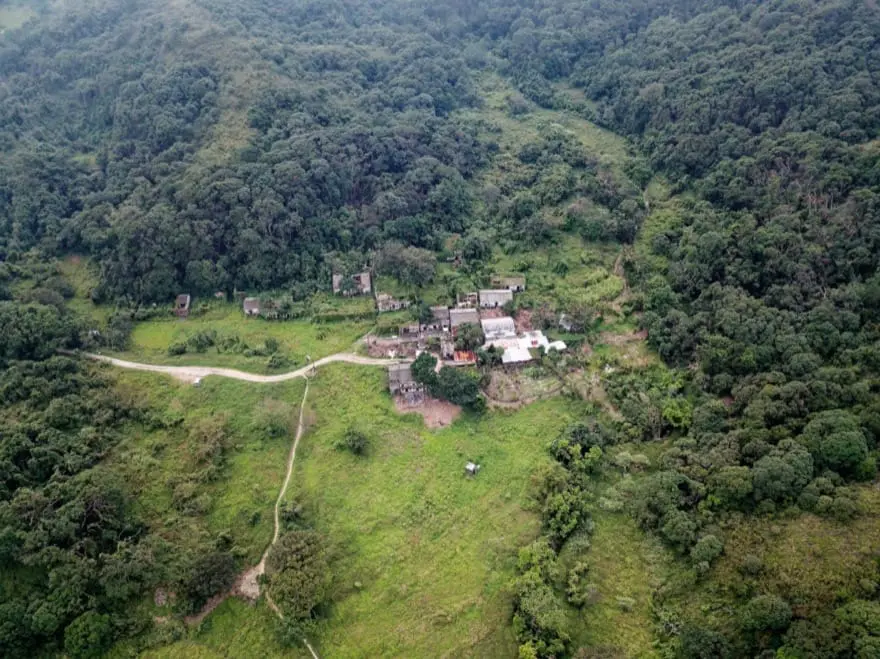

It seems the injunction worked, enabling Green Power plus its contractor to create a small wetland area beside Cheung Uk. This features a main pond perhaps the area of a tennis court, with plastic pipes leading to a handful of smaller, shallower pools below. The earth banks plus piping look simple, yet the project has so far cost several million Hong Kong dollars in government funding, and involved Green Power negotiating a tangle of red tape.
During a visit to the site, Green Power director Dr Cheng Luk-ki tells of the landscaping work requiring Town Planning Board approval, and the challenges in even creating a small irrigation channel from a nearby marsh. Given the sensitivity of Shalotung, the Agriculture, Fisheries and Conservation Department closely oversees plans, aiming to prevent adverse impacts by the project.
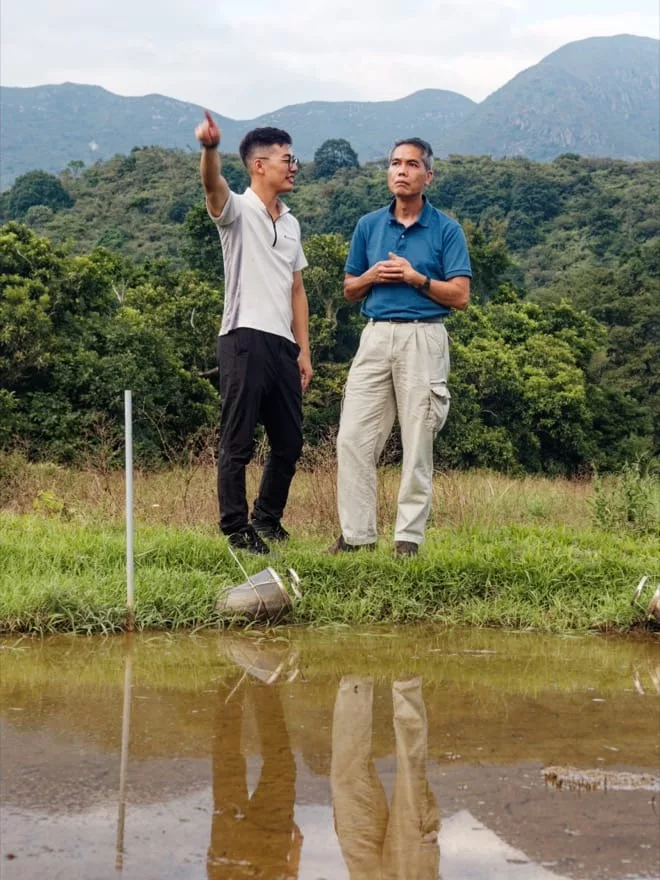
“We’ve planted native species like plants found nearby,” says Cheng. Wildlife surveys by Green Power indicate the effort to create wetlands on an area that had dried out are paying dividends, with dragonflies including two species that had not been recorded for six years. While the management agreement ended in July last year [2022], the government is providing further funds so Green Power can manage the new wetlands, and create more.
Green Power also organises educational tours of Shalotung, and is working in parallel with another new venture, organic farming by Sha Lo Tung Greenfield.
Organic farming by Sha Lo Tung Greenfield
Sha Lo Tung Greenfield is spearheaded by Kenny Li Hon-man and Celia Chan, who talk with me in a wooden shelter surrounded by vegetable plots. [Sixty-two] year old Li is a native of Shalotung, and remembers his early childhood years here. “I started to help my mother with farming when I was five or six; I even had a cow when I was a little kid,” he says.
Li’s family emigrated to England when he was 14. After school and university in England, he returned to Hong Kong, where his work included setting up an IT firm, along with stints in mainland China. On retiring, villagers invited him back to Shalotung as their representative, partly to help oversee the land exchange. “If they think me capable, why not?” he thought – after all, it was always his idea to live here after retirement.
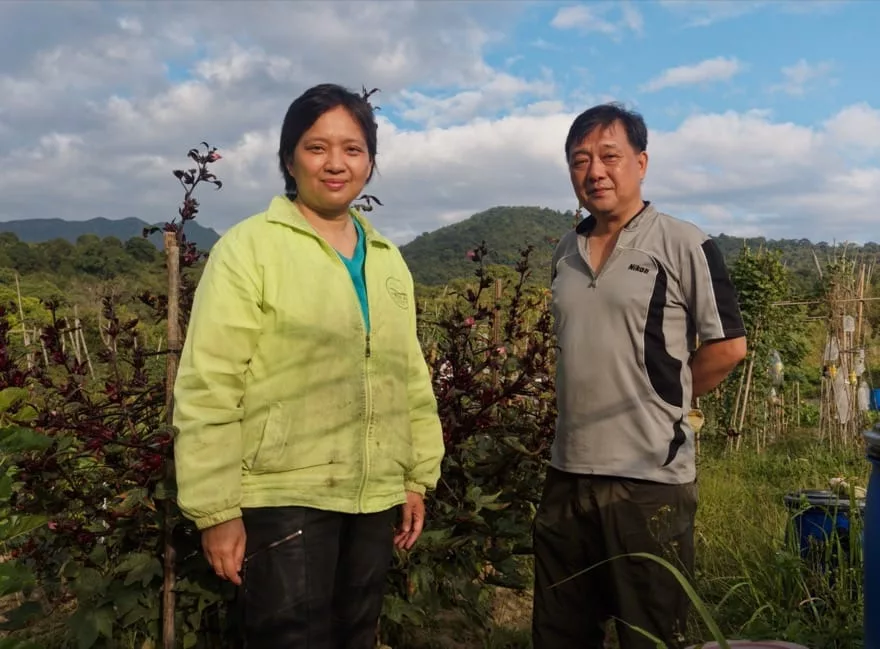
“We’ve done quite a lot; it had seemed like mission impossible here,” says Li. “Other than finishing the land exchange, the government had no idea what to do with Shalotung. We inspire them, saying people can move back, and live with nature, receiving training in organic farming from Celia.”
Celia Chan is a former office colleague of Li. Hailing from urban Hong Kong Island and, with a corporate career background following a degree in human resources management, might seem an unlikely person to teach organic farming. But she always loved hiking and the outdoors, and was working at Li’s company when he returned from the office one Monday, looking tanned. “Have you been sunbathing?” she asked, and when he told her of Shalotung, Chan decided to see for herself, leading to her becoming so fascinated with the work there, she became an organic farming inspector, after a course at Hong Kong Baptist University.
“Organic farming is not for making money – in the long run, it’s for the good of the soil, avoiding problems with for fertilisers and herbicides,” says Chan, who is now at Shalotung full time, albeit with part time consulting via email and phone calls.
Chan and Li outline how they have developed the farming project with little funding, struggling to build things like two solar power stations, and installing pumps to source stream water. Currently, perhaps 70 percent of the people working with them are from outside Shalotung. “The DNA of village people is materialistic, many will only work for money,” says Li. “I can’t convince all the villagers to join, except 10 or 20 who like this project as much as I do. We started with three villagers, and word has spread.”
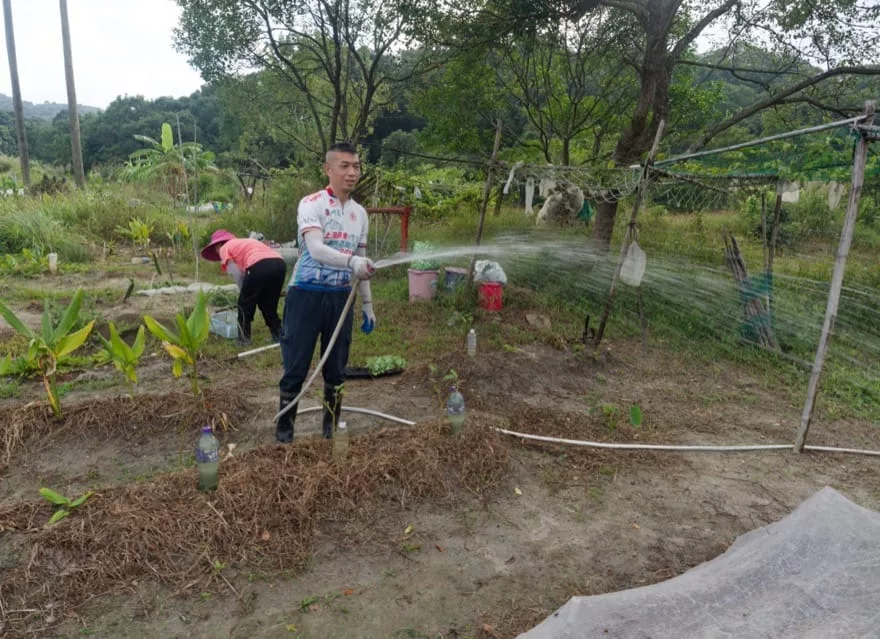
Hopes for an “eco village”
Chan rallied volunteers by contacting former classmates who are nearing retirement, some of whom arrived with strong backgrounds like being university professors, and help with installing and repairing equipment, figuring how to collect rainwater, and seek government permission for aspects of project work. “I also joined a Facebook group about farming, and invited members to come here,” Chan says; now there is a pool of around 90 volunteers.
Perhaps unsurprisingly on this “battlefield”, Li remarks that working side by side with Green Power has not always been easy, with arguments in the first two years, but now appreciates ways Cheng Luk-ki and colleagues can help by evaluating their efforts. “I’ve been to England, met villagers there, and told them, ‘Green Power is not your enemy – you can consider they are your gardeners,’” he says.
Although Li waxes lyrical about harmony with nature, the farm has a small electric fence to keep out wild boar, along with dogs that occasionally kill boar. I point out this is hardly harmonious, to which Li responds, “The wild boar can move back to nature.”
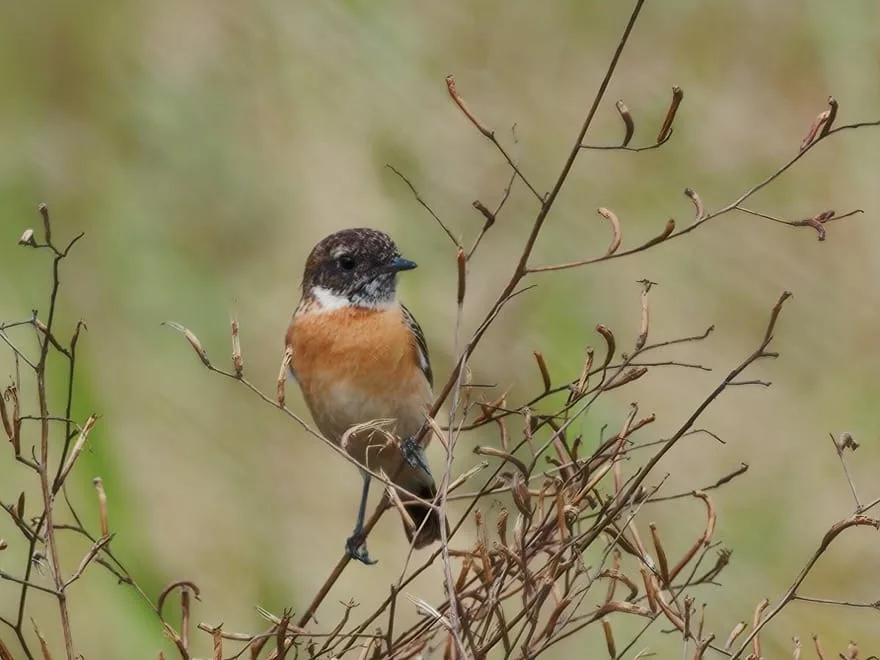
Even so, I notice birds like olive-backed pipits feeding in the farm, and Li says, “This is the first example in Hong Kong of a green group and villagers working together in harmony.” While some might quibble with this, he hopes the groundwork has been laid for convincing the government to allow further small-scale development in Shalotung.
“Now, we are only using about a twentieth of the old farmland,” says Li. “If we can expand a little, it will be the best way forward.” Helped by the Shalotung Development Company paying around HK$1.5 million in compensation to families who had sold their development rights, Li hopes it will be possible to rebuild around 12 houses, with nine of them forming an “eco village”.
That’s easier said than done, of course, with challenges including waste treatment so streams are unsullied. But Li is optimistic. “We need more flexibility and support from government,” he says. “If they are brave enough to say ‘Yes,’ we will do more to make Shalotung look even better.”
Written for the South China Morning Post Sunday magazine.

In 1992 I returned to Hongkong for the launch of my father Graham Heywood’s book ‘Rambles in Hongkong’ updated by Richard Gee. I painted a series of watercolours using the book as my guide. One of the places I sketched was Shalotung, praying meanwhile that this beautiful place with it’s feng shui woods and streams wouldn’t be destroyed. Incidently Richard Webb wrote his PHD on feng shui woods that can be read from the shelves of Cardiff University; (he missed out mentioning there sacred aspect).
The losing battle to preserve Shalotung continues. This tranquil abandoned village of Shalotung is one of HK’s most beautiful rural areas. Easily accessible from Tai Po Market station. Oh, I miss the little time I spent in the summer of 2017.